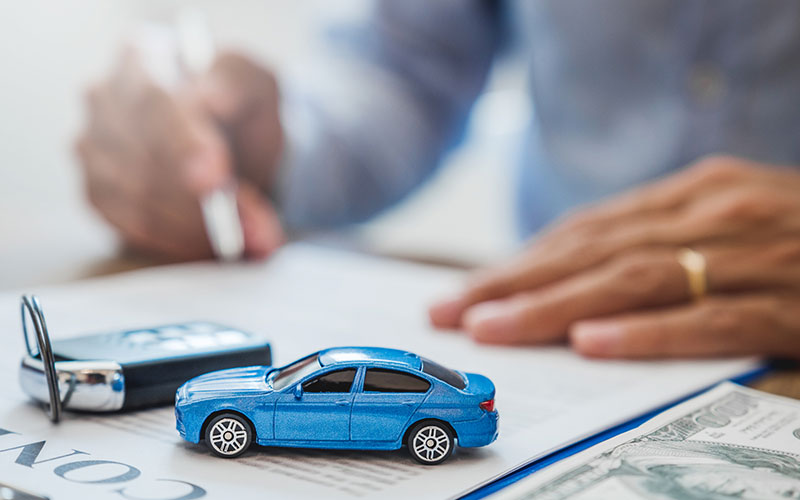What High Interest Rates Mean for Car Buyers
Recent interest rate hikes are reverberating through the US car market. Here’s how they might impact your car buying decisions.
Ups and Downs

It has been a wild few years in the car business. The coronavirus pandemic back in the spring of 2020 threw the global economy for a loop and we are still contending with the consequences. And while that bumpy ride continues, there may be signs that sky high car prices may be on their way back down to earth. To understand where we are, let us briefly cover how we got here.
First there was the bottom falling out of the car market in early 2020. Then, with the help of government stimulus, demand came roaring back in 2021. But a chip shortage and supply chain snags meant production disruptions that resulted in historically low inventory levels. This in turn led to major inflation in car prices. In response to inflation writ large, the US Federal Reserve has been raising interest rates to cool demand and get inflation back under control.
Rate Hikes and the State of the Car Market

Those Fed rate hikes raise the cost of borrowing with the ultimate outcome being a decrease in demand. Lower demand, lower prices. However, this process takes time (and carries with it the specter of recession if demand drops too low). We will have to wait and see over the next few months how the rate hikes the Fed has rolled out effect the global economy.
There are already early signs that those rate hikes are having their desired effect on the automotive sector. Used car prices are down 10.6% year-over-year and the average transaction price for a new vehicle is also down from its July highwater mark above $46,000 to $45,600 this month.

Interest rates are not the only factor bringing down car prices from their fevered peaks. Inventory levels, especially on the used side, have seen significant changes of late. New car inventories are up by 20 days year-over-year and up six days for the month of September. Used car inventories are likewise up 9 days year-over-year and three days in September.
Additionally, the used market looks to soften further with a consistent drop in wholesale prices as values have been dropping by around a full percentage point on a weekly basis and in some segments by two or even three percent. Indicating that dealers are pulling back in anticipation of slowing demand in Q4 and beyond (again in response to higher interest rates).
Is it a Good Time to Buy?

Like so much car buying advice, it really depends on specific circumstances whether now is the best time to buy. So, let’s run through a few scenarios. Recovering from the still persistent chip shortage has been slow and uneven across the industry. This is especially impactful if you are looking to buy a new car versus a used one.
What brand of vehicle you are shopping for will impact both the price you will pay and how quickly you can get the vehicle delivered. High demand and production delays continue to hamper some of the sector’s most popular brands. Kia, Honda, Toyota, Subaru, and Lexus all report inventories under a 30-day supply. Meanwhile, brands like Volvo, RAM, and Jeep all have greater than a 70-day supply. So if you want a specific vehicle, and even more so if you want a specific color or trim, be ready to wait months for delivery and pay more for your vehicle.

If you are shopping for a used car, you are in luck. Inventories have begun to recover, especially on the used side of the car market. Repossessions are, sadly, up, adding more cars to the used market and higher interest rates are driving some shoppers away. Lowering demand and increasing inventory make this, and going forward, a good time to buy a used car. That is, so long as you have good credit. High rates are best managed by having a good chunk of money to put down and by choosing the shortest loan term you can manage. For more advice on buying a car with bad credit, click here. Even better, buy cheap and pay cash.
Whether you are buying new or used, you, the car buying consumer, are in a better negotiating position than you were a few months ago. Increased inventory, especially on the used side, means you have more options and dealers can no longer assume your choices are limited. The dealer’s calculous has changed. Where once it was harder to find a car to sell than a customer seeking to buy one, the reverse is becoming true.

Higher interest rates also effect dealers. Most dealers finance their inventories. Higher rates mean they are paying more money over time as a vehicle sits unsold on their lot. This gives the car shopper greater leverage when negotiating. Combine this in the used market with falling wholesale values and new windows of opportunity beginning to open for shoppers.
Key Takeaways
- Rising rates will make the car market hostile to shoppers with bad/poor credit (with APR upwards of 20 percent or more).
- Those rising rates will also apply pressure on some dealers to turn over inventory, especially in the used car sector, increasing buyers’ leverage in negotiating prices and terms.
- While inventories are recovering, they still have a long way to go in the new car sector and wait times for some popular models will remain painfully long.









